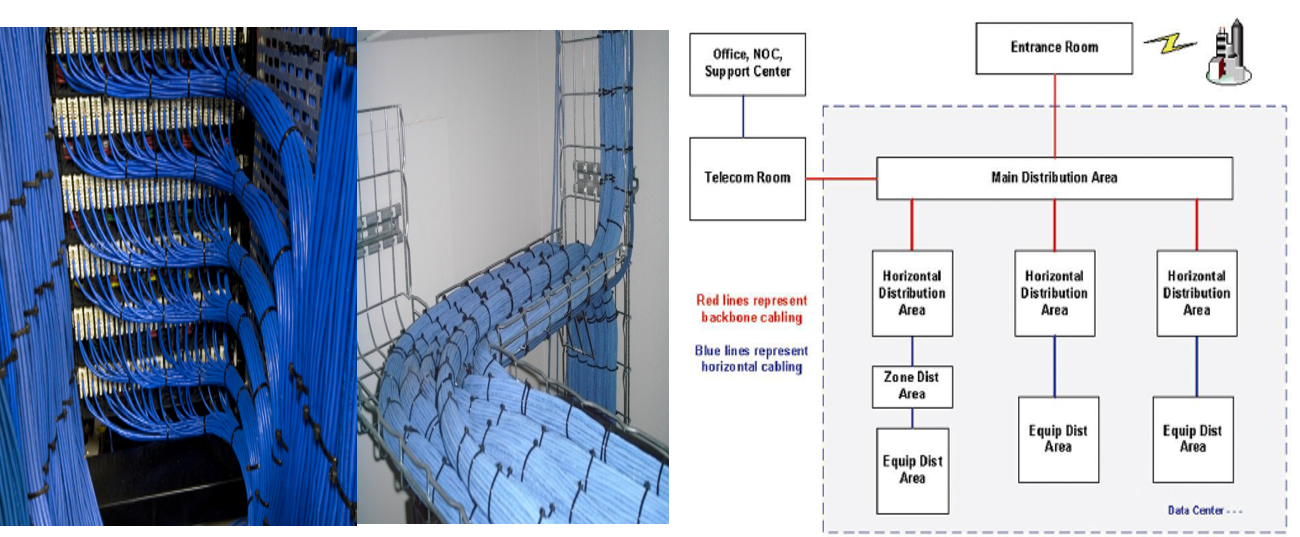SMART DATA CENTER
If data is king, your infrastructure should be its castle.
DATA CENTER SOLUTIONS

DESCRIPTION
PHYSICAL
Available Space and Weight of equipment including RACKs; Load & Density.
REDUNDANT POWER SOURCE
(N +1): Parallel Power Source, UPS with Batteries and Redundant PDUs
PRECISION AIR COOLING TO BE MAINTAINED
- Redundant and should be 20 0 C (+/-2 0 C )
- Humidity Control (50+/-5%)
- Air Movement and Filtration
FIRE SUPPRESSION ACCORDING TO FPA 72, 75 AND 2001
NETWORKING
- Load balancing
- Redundant Paths
- Network Security
.
RACKS AND CABINETS
- Capacity of RACKs for load
- Scalability of RACK Space in DC
- Weight of RACKs with Equipment
- Floor sustainability for future scalability and Engineering for expansion
- Electrical PDUs till RACKs with redundant power Source


DC AIR FLOW
PRECISION ACS FOR COOLING
Cooling systems play an increasingly critical role in protecting sensitive IT systems from extreme variations in temperature and humidity that can cause system failure, degrade performance, and shorten equipment life—particularly in the high-density environments that have become common in enterprise data centers Precision cooling systems are designed specifically to meet the needs of dense electronic loads, which generate a dryer heat than typical comfort-cooling environments and require year-round, 24-hour cooling. Electronics are also more sensitive to variations in humidity and air quality than typical comfort-cooling environments.

DATA CENTER FLOOR DESIGN
Data Center Raised Floor: Engineering flexibility to make changes in the design before building. Whenever the decision to add or move equipment is considered, facility managers must consider the impact of the extra load to the existing IT Infrastructure load on floor and density
TYPICAL LAYOUT OF DC: FLOOR DESIGN
- The number of rack locations that are possible in the room
- The achievable power density
- The complexity of the power and cooling distribution systems
- The predictability of temperature distribution in the room
- The electrical power consumption of the data center
NUMBER OF RACK LOCATION
The floor layout can have a dramatic affect on the number of rack locations that are possible in the room. On average, the number of IT rack locations possible can be estimated by dividing the room area by 30 sq ft / rack, the actual number of racks for a particular data center can vary greatly from this typical value.
DATA CENTER FALL SELLING CONSTRUCTION

- Reduces the amount of cold aisle space that will require cooling
- Can enhance control of ducted return air in the hot aisle
- Helps maintain cleanliness inside the data center
- Provides more pleasing aesthetics inside the data center
- Provides security when ceiling panels are locked in place
DATA CABLE NETWORKS

TIA-942 Telecommunications Infrastructure Standards for Data Centers specifies requirements and guidelines for infrastructure of data centers. Based on existing cabling standards, TIA-942 covers cabling distances, pathways and labeling requirements, but also covers site selection, demarcation points, building security and electrical considerations. As the first standard to specifically address data centers
Reliable, fast transmission to handle data, High-density solutions, Easy-to-install components for quick initial deployment and upgrades
NETWORK IDENTIFICATION
In the labyrinth of cables, clarity is key. Whether you’re managing a network infrastructure, troubleshooting electrical systems, or simply organizing your home entertainment setup, knowing your cables is essential. Here’s a simple guide to help you identify them with confidence

TIA-942 Standard Helps to Install, Configure and Maintenance ease


PRECISION ACS FOR COOLING
Cooling systems play an increasingly critical role in protecting sensitive IT systems from extreme variations in temperature and humidity that can cause system failure, degrade performance, and shorten equipment life—particularly in the high-density environments that have become common in enterprise data centers Precision cooling systems are designed specifically to meet the needs of dense electronic loads, which generate a dryer heat than typical comfort-cooling environments and require year-round, 24-hour cooling. Electronics are also more sensitive to variations in humidity and air quality than typical comfort-cooling environments.